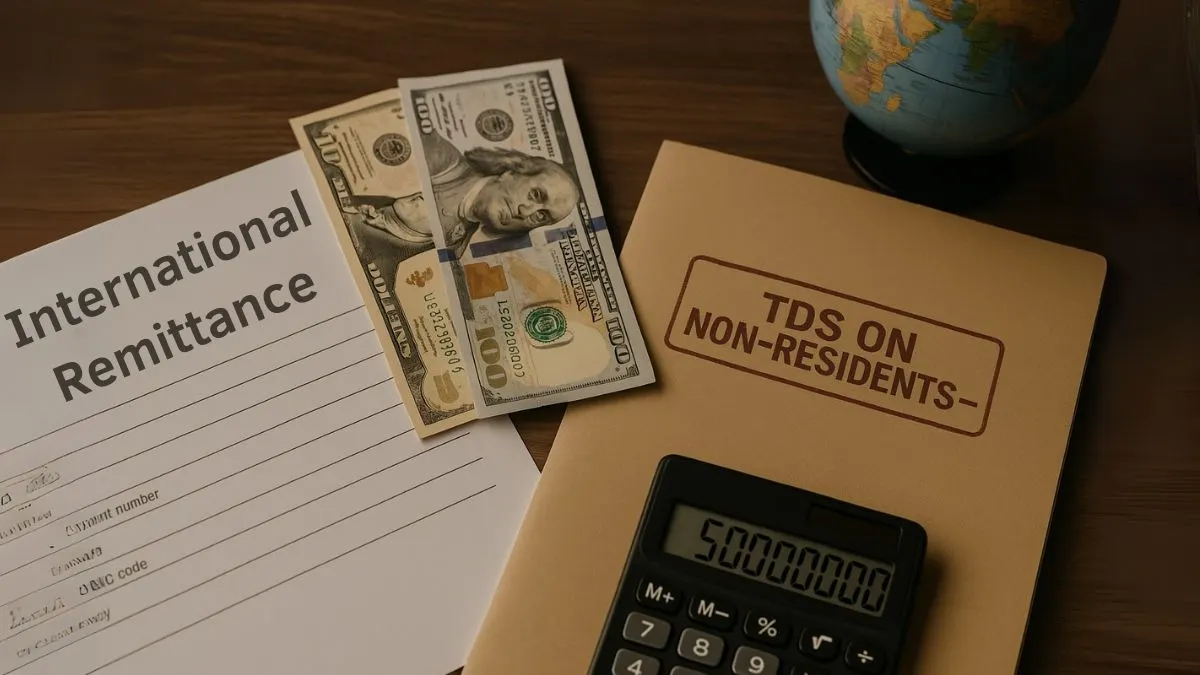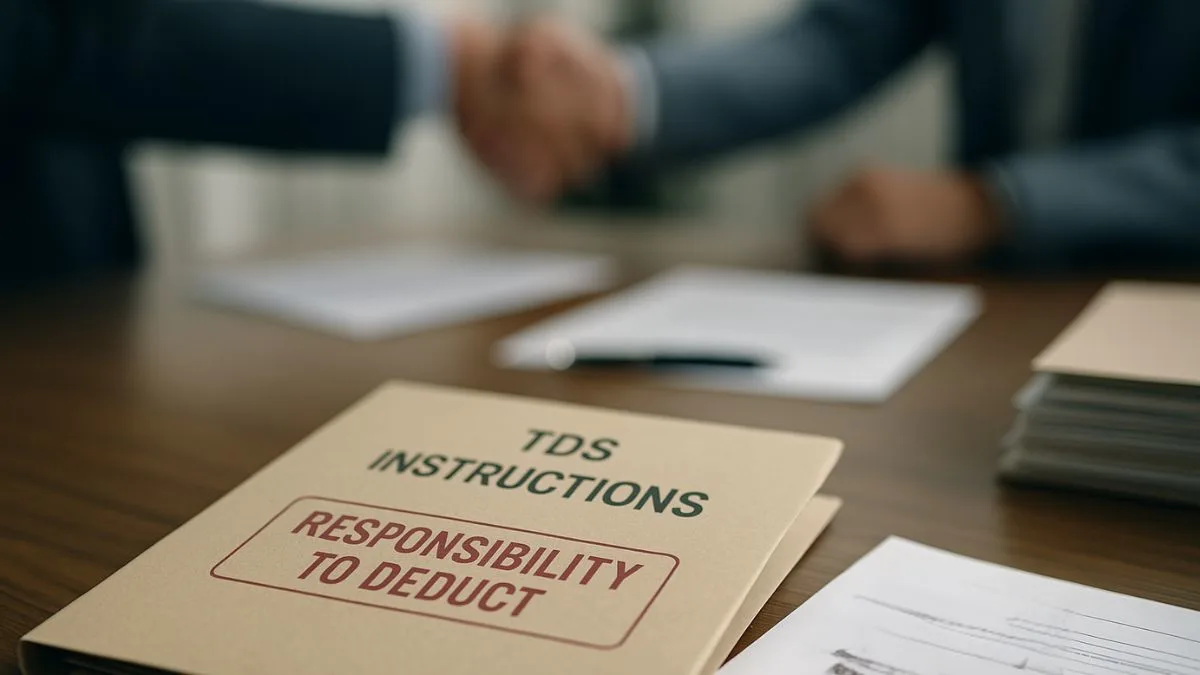
When businesses or individuals in India make payments to non-residents, taxation becomes a sensitive issue. Unlike domestic transactions, where TDS rules are relatively straightforward, cross-border payments involve complexities of double taxation treaties, nature of payment, and applicable rates.
This is where Section 195 of the Income Tax Act, 1961 comes into play. It ensures that tax is deducted at source whenever payments are made to non-residents. However, the exact tax liability is often unclear, & deducting excess tax can cause unnecessary complications. To address this, Section 195(2) provides a solution by allowing payers to consult with the Assessing Officer for clarification.
Understanding Section 195(2)
Section 195 broadly states that every person making a payment to non-residents, excluding salary, must deduct tax at source. This covers payments such as:
- Interest
- Royalty
- Fees for technical services
- Professional fees
- Business payments
But the big challenge is determining the taxable portion of such payments. For example, not all parts of a payment may be taxable in India.
To avoid deducting excess TDS, Section 195(2) allows payers to seek clarification from the Assessing Officer. This ensures that only the taxable portion of the payment is subjected to TDS."
Key Features of Section 195(2)
- Applicable to Every Person Making Payment
Whether you are an individual, company, partnership firm, or HUF, if you are making a payment to a non-resident, you must check Section 195 compliance. - Covers Payments Other Than Salary
The section specifically excludes salary, which is governed under different provisions. Payments for services, royalty, or professional fees fall under this section. - Role of the Assessing Officer
Section 195(2) empowers the payer to approach the Assessing Officer to determine the appropriate proportion of income chargeable to tax in India. - Ensures Fair Deduction of TDS
Without this section, payers might deduct TDS on the entire payment, even if only a part is taxable. Section 195(2) prevents such unnecessary deductions.
Also Read: TDS on Foreign Payments: Everything You Need to Know
Why Section 195(2) Matters
In cross-border transactions, tax disputes often arise due to lack of clarity. Section 195(2) plays a crucial role by:
- Ensuring compliance with Indian tax laws.
- Protecting payers from liability if TDS is wrongly deducted.
- Preventing excessive deduction of tax, which could burden non-residents.
- Encouraging smoother international trade & service exchange.
By allowing payers to seek clarification from the Assessing Officer, this provision balances compliance with fairness.
Example Scenarios
Example 1: Payment to Foreign Consultant
A company in India hires a consultant from the US for advisory services and pays $20,000. The company is unsure whether the entire amount is taxable in India. Under Section 195(2), the company can apply to the Assessing Officer to determine the portion chargeable to tax. TDS is then deducted only on that portion.
Example 2: Royalty Payment to Foreign Entity
An Indian firm pays royalty to a non-resident company for using technical know-how. Part of the payment relates to services utilized outside India. The payer can approach the Assessing Officer to get clarity on the taxable portion in India.
Benefits of Section 195(2)
- Reduces Risk for Payers: Protects the payer from penalties & interest arising due to wrong TDS deduction.
- Fairness for Non-Residents: Non-residents avoid excessive tax deductions and refund delays.
- Certainty in Taxation: Businesses gain clarity before making payments.
- Promotes Ease of Doing Business: Cross-border transactions become smoother when tax disputes are minimized.
Also Read: TDS on Virtual Digital Assets (Crypto, NFTs & More)
TDS Provision Under Section 195(2)
The TDS provision for individuals making payments, excluding salary, ensures that:
- Tax is deducted at the source of payment.
- The payer consults the Assessing Officer when there is doubt.
- Only the income chargeable under the Act is subject to TDS.
This aligns with the principle that India should tax only the income earned or accrued within its jurisdiction.
Compliance Process
- Application to Assessing Officer – The payer submits details of payment & nature of the transaction.
- Examination by AO – The Assessing Officer examines whether the whole or part of the payment is taxable.
- Order Issued – AO issues an order specifying the taxable portion.
- TDS Deduction – The payer deducts tax only on the portion directed by AO.
Judicial Interpretation
Courts have consistently upheld the importance of Section 195(2). The Supreme Court in GE India Technology Centre Pvt. Ltd. vs. CIT (2010) clarified that TDS is applicable only when the payment is chargeable to tax in India. Section 195(2) provides the mechanism for determining this."
Common Challenges
While Section 195(2) provides relief, businesses often face challenges like:
- Delay in AO’s order leading to payment hold-ups.
- Complex documentation requirements.
- Different interpretations in cross-border cases.
Nevertheless, it remains a crucial compliance safeguard.
Also Read: Tax Exemptions for Foreign Nationals in India
Conclusion
Section 195(2) of the Income Tax Act is a vital tool for handling TDS in international transactions. It ensures that every person making a payment to non-residents, excluding salary, complies with Indian tax rules while avoiding excessive deductions. By allowing payers to consult with the Assessing Officer, it provides certainty, reduces disputes, and balances fairness in cross-border taxation.
👉 If you want to avoid TDS disputes on international payments, get expert help from Callmyca.com – your trusted partner in tax compliance & advisory.











